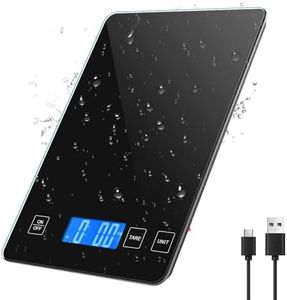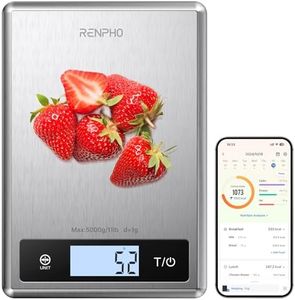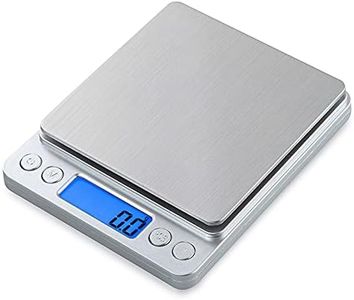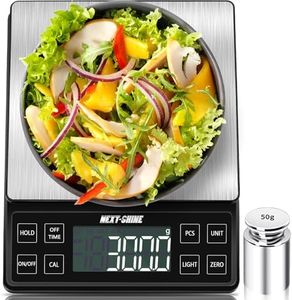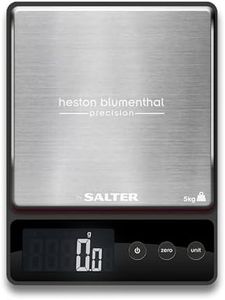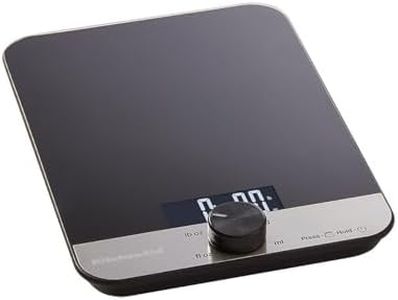We Use CookiesWe use cookies to enhance the security, performance,
functionality and for analytical and promotional activities. By continuing to browse this site you
are agreeing to our privacy policy
10 Best Kitchen Scales
From leading brands and best sellers available on the web.Buying Guide for the Best Kitchen Scales
Choosing the right kitchen scale can make meal preparation easier, more accurate, and consistent, whether you’re baking, watching your nutrition, or just need precise measurements. Rather than picking the first one you see, it’s important to think about what you’ll mostly use it for, how often you’ll need it, and what sorts of foods or ingredients you plan on weighing. Take a look at the main features and how they might fit your needs before making a decision.CapacityCapacity is the maximum weight a kitchen scale can measure in one go, usually expressed in grams, kilograms, ounces, or pounds. This is important because you want a scale that can handle the quantities you typically weigh without overloading. Smaller capacities, such as up to 2kg, are fine for most home cooks and bakers, especially for ingredients like flour or spices. Larger capacities, such as 5kg or more, are better if you prepare big batches or want to weigh heavier items like meats or batches of dough. To pick the right capacity, consider the largest item or batch you plan to weigh most frequently.
Accuracy and PrecisionAccuracy refers to how closely the measurement matches the actual weight, while precision means how finely the scale can measure (often shown as increments like 1g, 0.1g, or fractions of an ounce). This matters most when you're baking or measuring small amounts, where even a slight difference can affect your results. Scales that measure to the nearest 1g are suitable for everyday cooking. If you need higher detail, say for coffee, jewelry, or medication, look for a scale with 0.1g increments. Match the level of accuracy and precision to your intended use—more is not always necessary if you just want general cooking measurements.
Units of MeasurementScales usually allow you to measure in a range of units, such as grams, ounces, pounds, or milliliters. The ability to switch between units is important if you use recipes from different countries or prefer a certain unit type. Some scales can also measure liquids. If you want flexibility with international or various types of recipes, choose a scale with multiple unit options. If you always use the same measurements, this may be less critical.
Platform Size and DesignThe platform is the surface where you place items to be weighed. A larger platform allows you to place bowls, plates, or even bigger containers, which is useful for bulk cooking. A compact platform saves space but can make it harder to see the display when weighing larger items. For most people, a moderate size works well: big enough to support ingredients you typically use, but not so large that it’s difficult to store or clean.
Tare FunctionThe tare function allows you to reset the scale to zero after placing a container or after adding each ingredient. This is especially useful if you like to add ingredients one at a time without doing a lot of math. Nearly all modern digital kitchen scales have this, but it’s still worth checking. If you regularly weigh multiple ingredients in one bowl, make sure the scale has an easy-to-use tare button.
Readability and DisplayA clear, easy-to-read display ensures you don’t misread weight measurements, which can lead to mistakes. Consider the display size, brightness, and whether it’s backlit for low-light situations. You’ll want a display that is easy to see from various angles and not blocked when you use bigger bowls or containers. For people who often cook at night or in dim kitchens, a backlit display is particularly useful.
Cleaning and MaintenanceKitchen scales can get messy, so being easy to clean is a feature to value. Some scales have removable platforms you can wash, while others are sealed to prevent spills from seeping into the buttons or display. If you often work with sticky, wet, or powdery ingredients, consider a design with a smooth, waterproof, or removable surface for easy cleanup.
Power SourceKitchen scales may use different power sources, such as regular batteries, rechargeable batteries, or even manual winding. Battery-powered models are the most common and convenient, but consider how easy it is to change the batteries and how long they last. If you’d rather not worry about replacing batteries too often, look for models with longer life, or, in some cases, solar or USB rechargeable options. Your cooking habits will help you decide—if you use your scale daily, power efficiency is more important.
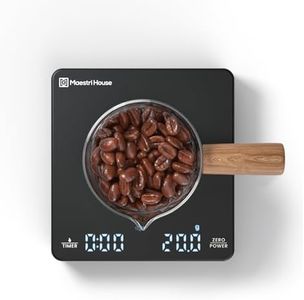


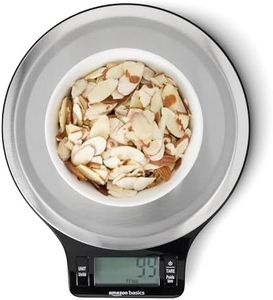
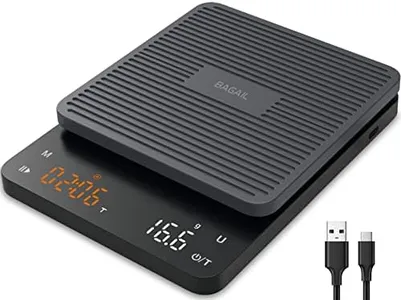
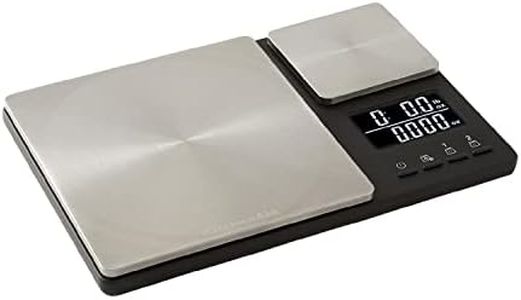
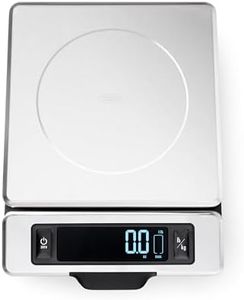
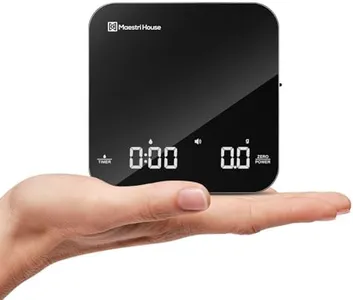

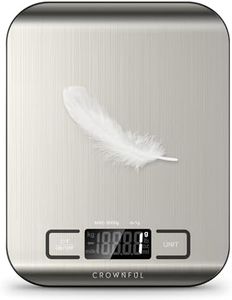
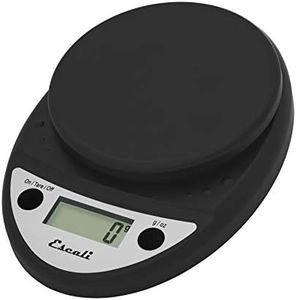
![Kitchen Scale, [10kg/0.01g] [New Version] Diyife Dual Platform Digital Scale Stainless Steel, Small High Precision Food Scale with LCD Display, PCS Features, Tare for Baking, Coffee, Jewelry, Medicine](https://images-proxy.bestreviews.guide/aUpHovc8YnnKYeb1ADsItTgOslc=/0x300/https://m.media-amazon.com/images/I/51eEAvN25cL._AC_CX679_.jpg)
